

worlov
-
Posts
44 -
Joined
-
Last visited
Content Type
Profiles
Forums
Events
Posts posted by worlov
-
-
-
1 hour ago, swansont said:
However, this is a new measurement you have added to the problem. Such additions usually just complicate the situation.
It's not that easy either. What is the difference between these two cases purely practical? In the first case the traveling twin flies 1 light-year forth and back. His brother is getting older than him. In the second case the traveling twin flies a bit further, additionally 1 light-year, and back. His brother is getting younger than him...
37 minutes ago, studiot said:swansont: "The earth never gets to the destination, because the earth is not moving relative to the destination."
@worlov
Since you are not interested in my comments look very carefully at this one.
It contains the a most important piece of information.
Of course, always the traveling twin flies. In the first case, his journey for the twin on earth takes the longest.
0 -
1 hour ago, swansont said:
Why? We've already established that the rocket will see the distance as half of what the earth sees. It can't simultaneously be half and twice that value.
As I said, it depends on who determines the journey.
In usual representation this makes the twin on earth. He chooses a star that rests in his frame. In his view, the traveling twin must fly the full length of the route. That's why the journey takes the longest. The traveling twin, however, sees the route shortened due to the length contraction. As a result, the journey takes shorter.
Now we let the traveling twin determine the destination of the journey. He finds an object, e.g. a meteroid, in the direction from the other side of the earth (see picture). This meteroid rests in the frame of the traveling twin. Together they fly relative to the earth (sun). From the perspective of the traveling twin, the earth should pass the full distance to the meteroid. That's why the journey takes the longest in his frame. However, because of the length contraction, the twin on Earth sees the meteroid closer. That's why the journey will be shorter for him.
In addition, the twin paradox is mutual.
0 -
2 hours ago, swansont said:
If the destination was 2 LY away according to the earth observer and gamma was 2, then the rocket observer will see the trip as lasting half the time as in the earth frame because the distance in that frame was 1 LY. The physics of d = vt works exactly the same, as it must.
And that applies vice versa. If the destination was 2 LY away according to the rocket observer (the lower half of the picture), then the earth observer will see the trip 1LY long.
0 -
The time dilation in relativity is relative. Every observer sees that the clock of another moving observer slows down. However, the twin paradox shows that time can indeed slow down. The twin paradox is not mutual... But I think I have discovered the trick. Everything depends on who determines the distance of the trip. Does the twin who remained on Earth do that, then this twin ages faster. And vice versa: Does the travelling twin do that in his frame during the outward journey, then this twin ages faster.
The difference is the length contraction. The twin who sees the route from another reference system sees this route shortened. Therefore, he needs less time to travel this route.
Best regards
Walter Orlov0 -
The cause of the distorted noise is obviously in the maintenance procedure. Both noise and signal are measured by the same equipment during this maintenance procedure. Therefore it is to be expected that the signal itself will be distorted as well as the noise.
If the signal has been stretched, it should be compressed so that it gets its original appearance. But then it will have different curvature than in Livingston. That way the chirps will not agree with each other. As result they can be treated only as random glitches. The consequence, there was no GW170608 event in reality.
0 -
Your theory about JPG effect can not be right. I painted a similar picture in Microsoft Paint. The file was first saved as BMP and afterwards as JPG. But I could not see any difference with my naked eyes. See also this picture below. The white stripe does not change the background. Certainly there is an effect in the pixel area, but for us this is insignificant. (So much for my alleged paranoia.)
The horizontal noise chains in the original spectrogram are therefore real!
0 -
The spectrogram ('a noise JPG') is a visual representation of the measurement data. If you say it is not relevant, then you're also rejecting the data behind it. I did not paint this spectrogram. Take the original picture and you will see the same thing.
0 -
Hello!
We have the following
"GW170608 was observed during a routine instrumental procedure at LHO..." http://iopscience.iop.org/article/10.3847/2041-8213/aa9f0c
The authors claim that this did not disturb the signal itself. But let's take a closer look at the spectrogram. I have made these a bit more contrasting
and brighter (see below). You can see in the spectrogram that the structure of the noise has changed: http://vixra.org/pdf/1804.0095v1.pdf Before the maintenance work we see the point-shaped fluctuations structure. And during the maintenance work it can be seen horizontal - along the time - noise lines, also in the frequency range above 30Hz. And this has obviously an aftermath: Hanford's Chirp is more than four times longer than Chirp by Livingston. Even if we accept the GW-event as real, the relativistic template is too long, because it was adapted to Harford's Chirp. That's why I think the data needs to be overhauled.Regards
0 -
POLARIZATION....
These attempts to describe the signal as the same as electromagnetic is 100 percent wrong. Doesn't make any difference what you set your filtering at or what internal errors are involved.
It's not about the electromagnetic influence. The "power line harmonic" coming from the electrical outlet. With 60Hz, 120Hz, 180Hz etc. pulsating supply voltage entire electronics. To suppress these pulsations entirely, should LIGO switch to battery supply.
0 -
Well I did ask if you looked at the specific formulas to generate the left hand graph. Have you? Did you understand the different requirements to detect a GW wave vs a dipole wave?
I'm sorry, I did not try. I am ignorant... but for good reason. I accept that if a gravitational wave actually comes, the detectors will notice it. And when an electromagnetic wave comes, the detectors will ignore them.Now we look at the noise of the detectors:What have the "Power line harmonic" lost here? Do they have anything to do with the gravitational waves? - Nothing! Nevertheless, they are in the measurement data. And what a coincidence: the signal reached the maximum amplitude at about 180Hz, that is at the third harmonic.If the detectors are working properly, then it may have been the lightning strike on the overhead power line, what the detectors have seen.I'm really trying to get a handle on your objections as its seemingly oriented toward calibration issues rather than the GW vs dipole differences.
Thanks for your patience. Actually, I'm to blame, because I immediately addressed several problems. Hence it is a mess. But we can also conclude the discussion.
0 -
absolutley...
I doubt this. In this way one has not directly confirmed the relativistic simulation. Meanwhile, the relativistic curve is changed significantly by the filtration. There remained only a "zilch". I lack a convincing return from "zilch" to the original function. Then the evidence would have been perfect.
0 -
The graphs above include the whitening background noise. You need to filter that noise out in order to see the GW Chirp.
Back to GW150914. The key to understanding of the data processing provides the following picture:
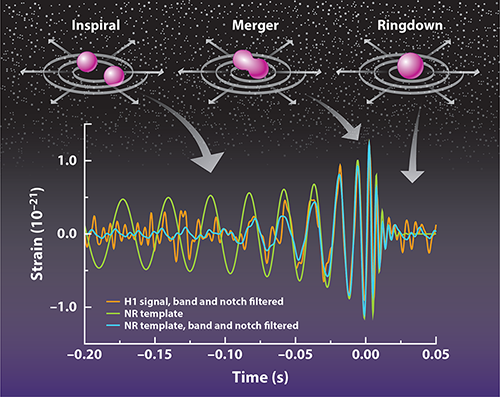
https://physics.aps.org/articles/v9/52
The numerical relativity (NR) template is band and notch filtered as well as the measurement data itself. In this way it fit with 5.1-sigma to the measurement data.
I have this also checked. We can fetch the data of "matched NR waveform" from the following URL: https://losc.ligo.org/s/events/GW150914/GW150914_4_NR_waveform.txt

Find you this justified?
0 -
I have suspected the active damping: https://www.ligo.caltech.edu/page/ligo-technologyThe source of error may be due to software.The regulation must be quite complicated:
Who looks through? Certainly, PID controller is realized, because it allows fastest and most accurate control. But... from experience I know that the PID controller are unstable when high frequency interference is present. Therefore, I prefer in my practice the PI controller. Yes, it is carrier, but stable.So, the software of the system for active damping can have a quirk.0 -
Basically, general relativity has nothing to do with jump phenomenon. I can well imagine that LIGO detectors were developed so that they would only react to gravitational waves and not to electromagnetic waves. In fact, I would rather prefer an antenna for receiving the programs of the radio stations.Jump phenomenon is the internal affair of the detectors and has a purely mechanical cause. In the diagram (source: https://losc.ligo.org/s/events/GW150914/GW150914_tutorial.html ) we can see that the oscillations during the crash of the signal have the same period T as the free oscillations before and after event.
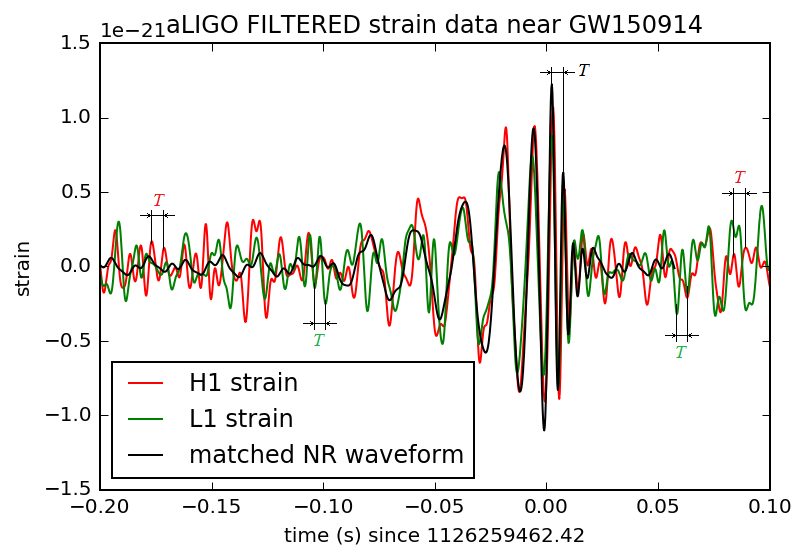 Because these oscillations are own oscillations, they are determined attenuated. But this balance can be injured by a disturbance. The system goes out of control, which may end with jump phenomenon.Such a scenario is not mentioned anywhere. Therefore, I suspect that the operators of LIGO have this potential source of error simply overlooked.
Because these oscillations are own oscillations, they are determined attenuated. But this balance can be injured by a disturbance. The system goes out of control, which may end with jump phenomenon.Such a scenario is not mentioned anywhere. Therefore, I suspect that the operators of LIGO have this potential source of error simply overlooked.
0 -
I have no idea of the signal algorithms used to extract data from the measurements...
That's true even. If you have time, you can try out here: https://losc.ligo.org/s/events/GW151226/LOSC_Event_tutorial_GW151226.html
Mechanical damping is necessary because otherwise even a distinguishable signal is swamped by noise...
We misunderstand us. From outside comes only brief disturbance. The signal itself is generated by LIGO detectors: "jump phenomenon"!0 -
I am the man of practice. And I see that the data trace are pretty wild. Why is left side approximated with a wave and right side with a straight line?Finally, if only the shape of the detectors is crucial, why do we need mechanical damping?
0 -
As you can see that signature is identical on both detectors.
This is even one and the same curve... only flipped horizontally. It does not come from the measurement data. It is considered as matching to the measured data... How many signatures are still fit to this noise?
0 -
Probably not - this sort of thing is not my area of expertise.
It is GW151226
Here you can read quite a lot of signatures. A unique signature is the idealism.
0 -
So your suggesting a lightning strike occured precisely halfway between two detectors 300 miles apart.
Allright. Then one can look for other sources... Finally, America is not a desert, but an industrial country
 0
0 -
I mean you have read the literature on this, right? You understand the kind of analysis involved? You do understand how well the signal matches the predictions?
Can you identify a matched signal here:What's the relevance of one to the other?
The sensitivity. 1 billion light years is a lot. The intensity falls also with distance. I think, one lightning is a piece of cake for LIGO detectors.
A lightning strike has a different wave signature. Electromagnetic radiation ie lightning induction follows a transverse dipole wave pattern.
The signature received by LIGO is a transverse quadrapole. This signature is only possible via gravity waves due to spin 2 statistics.
You mean electromagnetic radiation. But I think about short punch < 0.1s.
0 -
They are 3000 km apart. How, pray tell, does a lightning strike affect both of them?
And the black holes are distant from Earth over 1 billion light years, nevertheless, the detectors should have felt whose merger.
I am sure that they took their time in eliminating such things.
Perhaps there is still a discrepancy between optical sensitivity and mechanical stability. The detectors were originally built with smaller sensitivity. They were optical upgraded, but mechanically they may not be good enough for very small signals.
0 -
I meant: for example. I imagined that lightning strikes somewhere between two LIGO-detectors. Maybe they are sensitive enough. There may be other sources, but no earthquake, because the disruption must be of short duration.
0 -
Hello!I believe that LIGO-events have terrestrial origin (e.g. lightning strike). Registered traces could come from merger of two black holes or... there are the result of "jump phenomenon", if a sudden jump in amplitude occurs with increasing frequency :
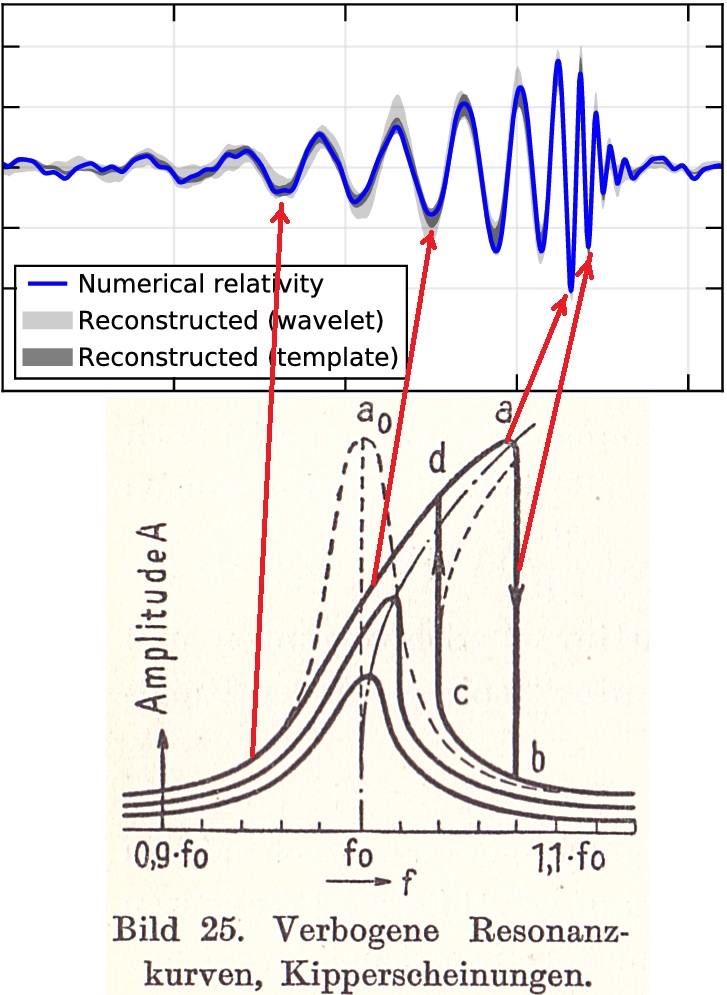 This is supported by1. The frequency of the falling edge corresponds to one of own frequencies of the LIGO-detectors before and after the event:
This is supported by1. The frequency of the falling edge corresponds to one of own frequencies of the LIGO-detectors before and after the event: 2. The signal is harmonious. But due to limited sensitivity of the detectors it should be pulsed:
2. The signal is harmonious. But due to limited sensitivity of the detectors it should be pulsed: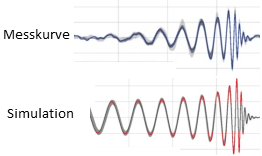 ==>
==> 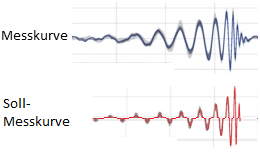 Perhaps the LIGO-operators should check their equipment carefully again before physicists publish the next sensation
Perhaps the LIGO-operators should check their equipment carefully again before physicists publish the next sensation Best regardsWalter Orlov
Best regardsWalter Orlov
0




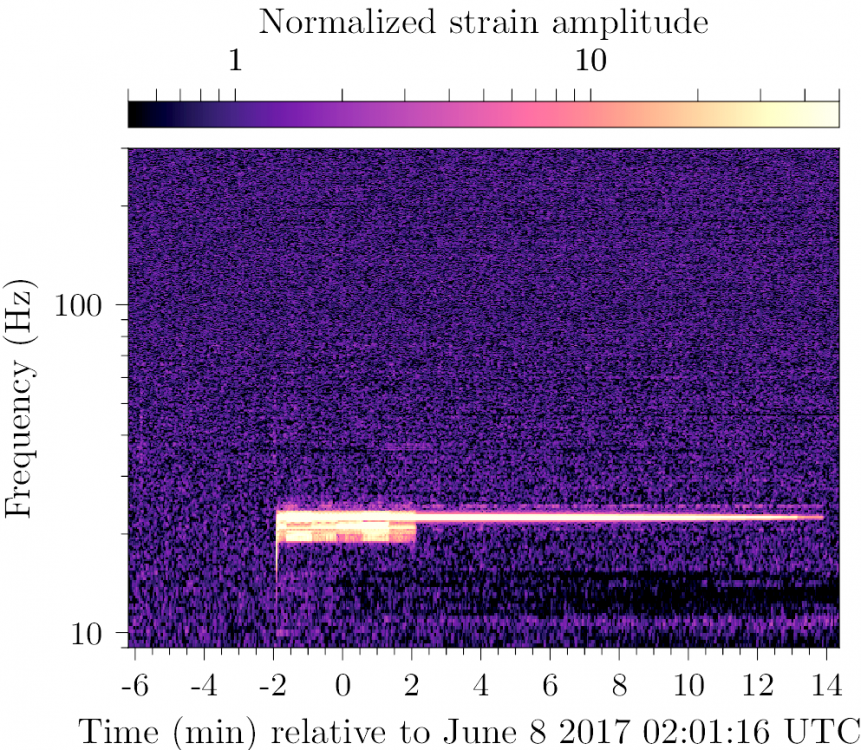
The twin paradox is mutual
in Speculations
Posted
The rocket can be built like a catamaran. In this way, the traveling twin can apply geometric parallax to determine the distance. And he will measure the time with his own clock. And calculate the speed from it.